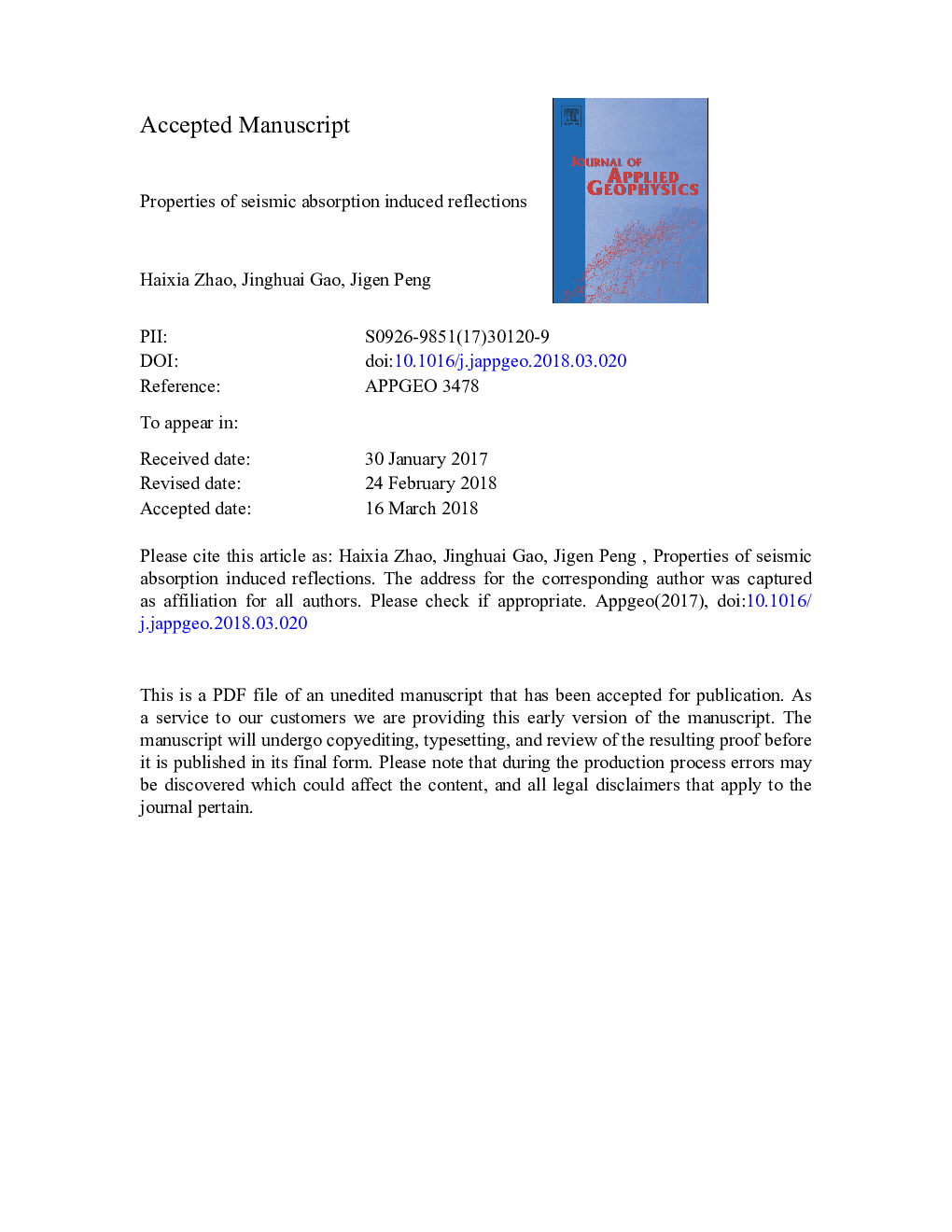| Article ID | Journal | Published Year | Pages | File Type |
|---|---|---|---|---|
| 8915411 | Journal of Applied Geophysics | 2018 | 45 Pages |
Abstract
Seismic reflections at an interface are often regarded as the variation of the acoustic impedance (product of seismic velocity and density) in a medium. In fact, they can also be generated due to the difference in absorption of the seismic energy. In this paper, we investigate the properties of such reflections. Based on the diffusive-viscous wave equation and elastic diffusive-viscous wave equation, we investigate the dependency of the reflection coefficients on frequency, and their variations with incident angles. Numerical results at a boundary due to absorption contrasts are compared with those resulted from acoustic impedance variation. It is found that, the reflection coefficients resulted from absorption depend significantly on the frequency especially at lower frequencies, but vary very slowly at small incident angles. At the higher frequencies, the reflection coefficients of diffusive-viscous wave and elastic diffusive-viscous wave are close to those of acoustic and elastic cases, respectively. On the other hand, the reflections caused by acoustic impedance variation are independent of frequency but vary distinctly with incident angles before the critical angle. We also investigate the difference between the seismograms generated in the two different media. The numerical results show that the amplitudes of these reflected waves are attenuated and their phases are shifted. However, the reflections obtained by acoustic impedance contrast, show no significant amplitude attenuation and phase shift.
Related Topics
Physical Sciences and Engineering
Earth and Planetary Sciences
Geophysics
Authors
Haixia Zhao, Jinghuai Gao, Jigen Peng,
